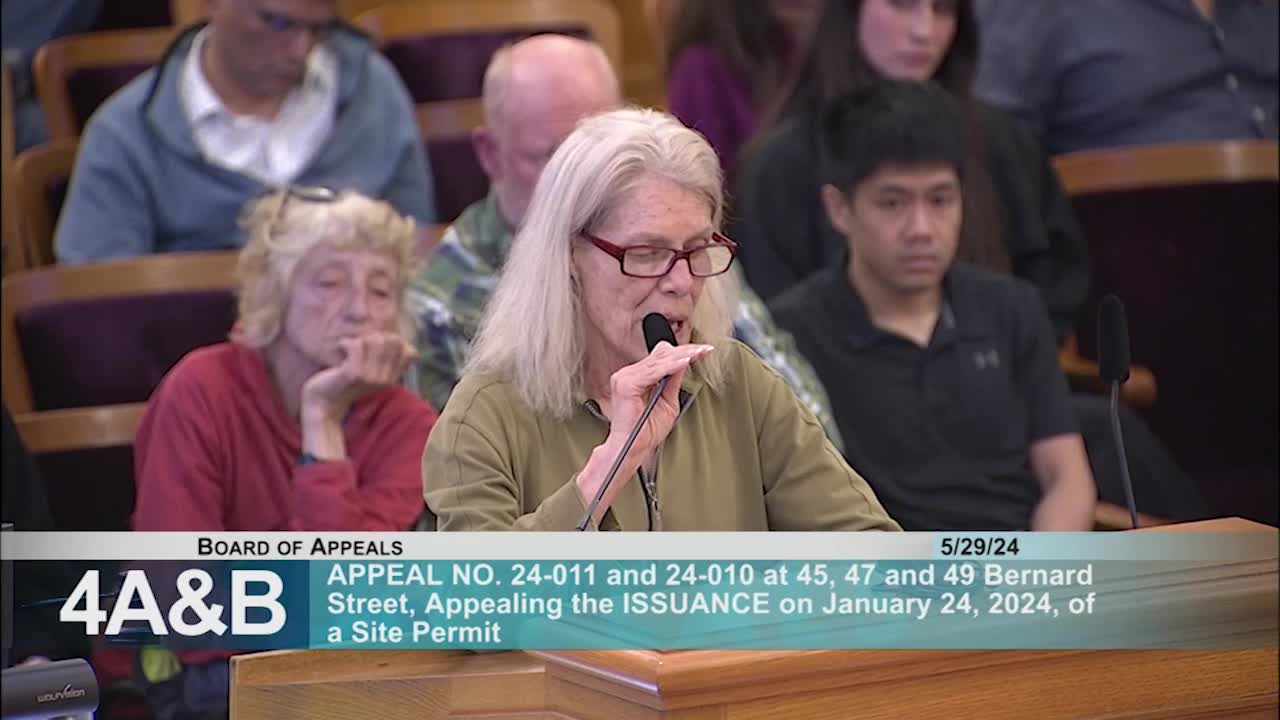San Francisco residents urge commission to prioritize open space over fire escapes
May 29, 2024 | San Francisco City, San Francisco County, California

This article was created by AI summarizing key points discussed. AI makes mistakes, so for full details and context, please refer to the video of the full meeting. Please report any errors so we can fix them. Report an error »

In the heart of San Francisco's bustling city hall, a recent meeting brought to light pressing concerns regarding urban development and community safety. As residents gathered to voice their opinions, the atmosphere was charged with a sense of urgency and a desire for open dialogue.
Catherine Wolf, a long-time resident and single parent, passionately addressed the commissioners, emphasizing the critical need for adequate open space in the neighborhood. "Open space is vital for mental and physical health," she stated, urging project sponsors to engage with the community before moving forward with their plans. Her heartfelt plea highlighted a growing concern among residents about the potential loss of communal areas, particularly for those living in Single Room Occupancies (SROs), where such spaces are often limited.
The discussion centered around a proposed development plan that included a fire escape and decks, which would reduce the required setback from 15 feet to just 13.5 feet. This alteration raised alarms among community members, who argued that it not only encroached on open space but also manipulated planning codes to the detriment of neighbors. Robin Tucker, another speaker, reiterated the importance of adhering to previous plans that prioritized safety and community well-being, advocating for sprinklers instead of fire escapes to ensure compliance with safety regulations.
As the meeting progressed, commissioners sought clarity on fire safety regulations, questioning the necessity of fire escapes when sprinkler systems could suffice. The dialogue underscored the complexities of urban planning, where safety, community needs, and regulatory compliance must all be balanced.
The meeting concluded without a definitive resolution, but the voices of concerned residents echoed a clear message: community engagement is essential in shaping the future of San Francisco's neighborhoods. As the city continues to grow, the challenge remains to ensure that development serves the needs of all its residents, fostering a sense of community rather than division. The outcome of this discussion will likely influence future planning decisions, as the city navigates the delicate interplay between development and community welfare.
Catherine Wolf, a long-time resident and single parent, passionately addressed the commissioners, emphasizing the critical need for adequate open space in the neighborhood. "Open space is vital for mental and physical health," she stated, urging project sponsors to engage with the community before moving forward with their plans. Her heartfelt plea highlighted a growing concern among residents about the potential loss of communal areas, particularly for those living in Single Room Occupancies (SROs), where such spaces are often limited.
The discussion centered around a proposed development plan that included a fire escape and decks, which would reduce the required setback from 15 feet to just 13.5 feet. This alteration raised alarms among community members, who argued that it not only encroached on open space but also manipulated planning codes to the detriment of neighbors. Robin Tucker, another speaker, reiterated the importance of adhering to previous plans that prioritized safety and community well-being, advocating for sprinklers instead of fire escapes to ensure compliance with safety regulations.
As the meeting progressed, commissioners sought clarity on fire safety regulations, questioning the necessity of fire escapes when sprinkler systems could suffice. The dialogue underscored the complexities of urban planning, where safety, community needs, and regulatory compliance must all be balanced.
The meeting concluded without a definitive resolution, but the voices of concerned residents echoed a clear message: community engagement is essential in shaping the future of San Francisco's neighborhoods. As the city continues to grow, the challenge remains to ensure that development serves the needs of all its residents, fostering a sense of community rather than division. The outcome of this discussion will likely influence future planning decisions, as the city navigates the delicate interplay between development and community welfare.
View full meeting
This article is based on a recent meeting—watch the full video and explore the complete transcript for deeper insights into the discussion.
View full meeting
